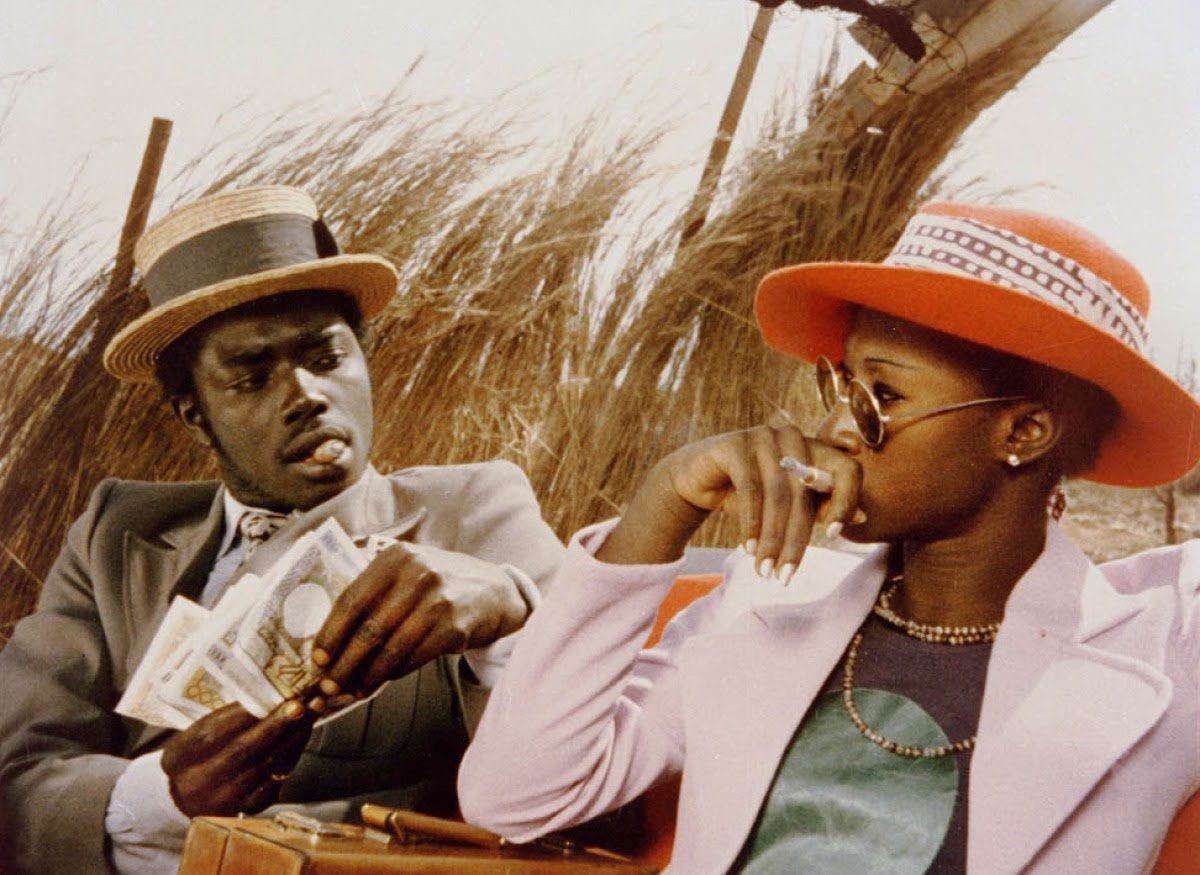Touki Bouki

Djibril Diop Mambéty
Senegal – 1973

Screenplay: Djibril Diop Mambéty
Cinematography: Georges Bracher
Production: Cinegrit Studio Kankourama
Language: Wolof, Arabic, French
Duration: 85 min
Color: Color
Synopsis: Mory is a cowherd who rides a motorcycle mounted with a bovine skull; Anta is a university student. They meet in the capital Dakar and decide that Senegal and Africa are no place for two adventurous and modern young people. Alienated and disaffected, they long to go to Paris, and set to carrying out various con schemes to get enough money for the trip. During one such exploit, Mory steals clothing and money from a wealthy gay man who has just picked him up, and together with Anta they book passage on a ship to France.
Notes:
Films made in Francophone West Africa in the 1970s generally belong to the social realist category. Their makers believed firmly in the social function of cinema. The themes and issues in Mambéty’s film, however, are in stark contrast to this trend. It strikes us with its poetry, fantasy and humor. Consideration of the characters, the director’s methods, the structure and themes of Touki-Bouki suggests that it is an African illustration of the French New Wave films. Mambéty was already familiar with New Wave works from his involvement with the Dakar Ciné-Club, where he acquired filmmaking techniques well suited for the production conditions in Senegal: working with restricted budgets, with consequent limitations on equipment, material, and personnel; using natural settings, location work, day and night shooting, with a “direct camera” – that is, a hand held camera, directly in the streets; improvisation – the films were often unscripted – and scanty shooting plans, with the photography and editing less mannered than those of earlier productions.
However, it is important to stress also the influence of African traditional culture on Mambéty’s cinematic writing. “One must not cheat by imitating others, one must be in tune with one’s heritage. What the masque nègre has done to advance modern art, it can do to cinematic writing,” he declares. The aesthetics of oral tradition have marked Touki-Bouki. Indeed, the film can be considered as an allegorical tale, with a pedagogical objective. It is cinematic story- telling. In the first place, the title already announces oral tradition: Bouki is the name of the popular character of the folk tale, a greedy, mischievous and sometimes nasty personage who lies and cheats to get what he wants. Also, the film has a cyclical structure, the third type in Denise Paulme’s classification of folk tales: the hero ends up exactly where he had started. Like the oral tale, it combines “truth and fiction, the depiction of circumstances, plot and dramatization, continuity and discontinuity of time and the relationship between images and sound.” Parallel actions (Mory’s and Anta’s) are represented in the parallel montage. A number of scenes, little cameos within the film – the wrestling match, the fight at the fountain, the coopérants on the deck of the liner, the man fleeing his creditor and trying to enter the harbor, etc. – do not strictly speaking belong to the main action. They correspond to the digressions characteristic of the oral tale. The film includes songs, chorus and praise singing. Like some oral narratives, it is an open ended dilemma t ale: it can be interpreted in different fashions. Finally, Mory’s peregrinations in Dakar, motivated by his quest, can be considered as an initiation journey. Touki-Bouki is firmly rooted in traditional culture and should be considered in the context of oral tradition.
Excerpt from Wynchank, Anny. “Touki-Bouki: The New Wave on the Cinematic Shores of Africa.” South African Theatre Journal 12, no. 1–2 (January 1, 1998): 53–72. – edited for Memory! by Theo Stojanov


